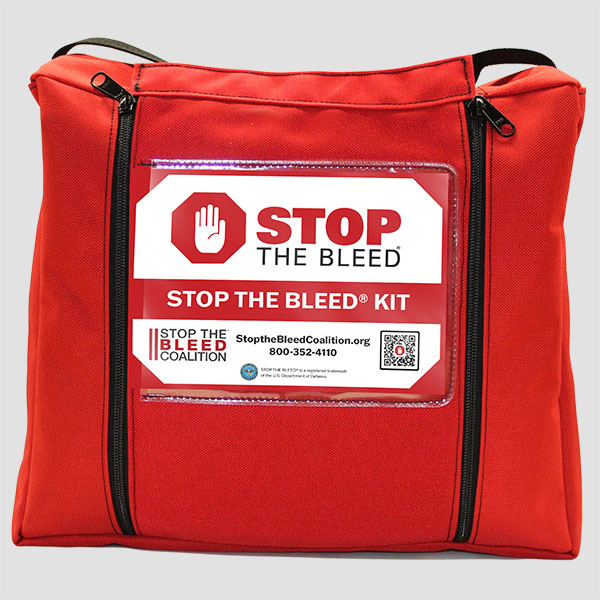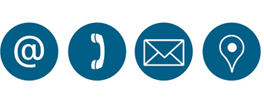Bleeding kits are essential tools used in emergency situations to control bleeding and provide first aid. They typically contain items like:
Dressing and Bandages: Sterile gauze pads, trauma dressings, and elastic bandages for applying pressure.
Tourniquets: Devices designed to apply pressure to a limb to control severe bleeding.
Antiseptic Wipes: For cleaning the area around a wound to reduce the risk of infection.
Medical Tape: To secure dressings in place.
Gloves: Disposable gloves to protect both the responder and the victim.
Scissors: To cut clothing or dressings as needed.
Instructions: Guidelines for proper use of the kit and how to manage bleeding.
It's important for individuals and organizations to keep these kits well-stocked and easily accessible, especially in environments where injuries are more likely to occur, such as workplaces, schools, or outdoor activities. Regularly check expiration dates and restock items as needed. Would you like to know more about specific components or how to use them?

Having a bleeding kit in your business offers several important benefits:
Immediate Response: Quick access to a bleeding kit allows for immediate first aid in case of an injury, potentially saving lives or preventing further harm.
Compliance and Safety: Many industries are required to have first aid supplies on hand. Having a bleeding kit helps ensure compliance with occupational health and safety regulations.
Employee Confidence: Knowing that there are supplies available for emergencies can boost employee morale and confidence in the workplace.
Reduced Severity of Injuries: Prompt treatment can help control bleeding and reduce the severity of injuries, leading to better outcomes and quicker recovery.
Training Opportunities: Having a bleeding kit can encourage first aid training among employees, creating a more safety-conscious workplace.
Risk Mitigation: It demonstrates a commitment to safety, potentially reducing the risk of liability in case of an accident.
Preparedness for Emergencies: It prepares the business for a variety of emergencies, from minor injuries to more serious incidents, fostering a culture of readiness.
Enhanced Reputation: Businesses that prioritize safety are often viewed more favorably by clients, customers, and potential employees.
Investing in a bleeding kit is a proactive step towards ensuring workplace safety and readiness for emergencies. Would you like tips on how to implement this in your business?

An Automated External Defibrillator (AED) can be a critical tool in saving a life during a cardiac emergency. Here’s how it works and why it’s so effective:
1. Understanding Cardiac Arrest
What Happens: Cardiac arrest occurs when the heart suddenly stops beating effectively, leading to a loss of blood flow to vital organs, including the brain.
Importance of Time: Brain damage can start within minutes without blood flow, making rapid response essential.
2. Immediate Action
Call for Help: In an emergency, the first step is to call emergency services (like 911) to ensure professional medical assistance is on the way.
Perform CPR: Begin CPR (cardiopulmonary resuscitation) immediately to keep blood flowing until an AED is available.
3. Using the AED
Quick Accessibility: An AED can be found in public places, workplaces, and many other locations, making it accessible when every second counts.
Step-by-Step Guidance: Most AEDs provide clear audio and visual instructions, making them user-friendly even for people with no medical training.
Heart Rhythm Analysis: The AED analyzes the heart's rhythm to determine if a shock is needed. If the rhythm is shockable, the device will advise the user to deliver a shock.
4. Defibrillation
Restoring Heart Rhythm: If a shock is advised, the AED delivers a controlled electric shock to the heart, which can help restore a normal rhythm.
Improving Survival Rates: Early defibrillation (within the first few minutes of cardiac arrest) significantly increases the chances of survival.
5. Post-Shock Care
Continued CPR: After delivering a shock, CPR should continue until emergency medical personnel arrive or the person shows signs of recovery (e.g., responsiveness, normal breathing).
Professional Help: Medical professionals will take over and provide advanced care.
6. Training and Awareness
Encouraging Preparedness: Training staff and the public on how to use AEDs can save lives. Familiarity with the device reduces hesitation during emergencies.
Conclusion
The rapid deployment of an AED in conjunction with CPR can dramatically increase the chances of survival for someone experiencing cardiac arrest. Having AEDs accessible in public spaces, workplaces, and community areas, along with trained individuals ready to use them, can be the difference between life and death. If you have more questions or need specific information about AEDs, feel free to ask!
.png)






